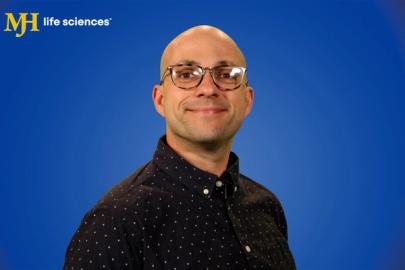‘Don’t Be Afraid’: Exploring the Rare Tumor Type TGCT - Episode 1
‘You Have More Options’: Treatment Beyond Surgery for TGCT
Systemic therapy and active surveillance can be viable options for patients with TGCT, as one expert explained.
Sydney Stern has undergone six surgeries for TGCT, or tenosynovial giant cell tumors. “So, we’ll say [that’s] five too many, maybe,” she told CURE®.
Stern, director of Giant Cell Tumor Programs at TGCT Support and the Life Raft Group, noted that there is no current standard of care for TGCT, a rare and benign tumor which starts in the tissue around the joints.
“Frontline [treatment] is surgery, in most cases,” she said. “That's shifting a little bit with the more options that become available and [as] some active surveillance starts to become [at the] forefront for patients that may not be symptomatic. But generally, [treatment] is patient-guided in the best cases, because they're given all their options immediately upon diagnosis. And that doesn't typically happen. The majority of patients are told, ‘You have a tumor, let's remove it,’ and it's not even discussed, whether you're symptomatic or not.”
In 2019, the Food and Drug Administration approved Turalio (pexidartinib) as the first TGCT therapy, and there are additional treatments currently subject to clinical trials, as experts told CURE® as part of the “Speaking Out” series. TGCT, the agency noted in its announcement of the approval, is a rare tumor affecting the synovium, or the thin layer of tissue covering the surfaces of the joint spaces, and the tendon sheaths, the membranes that cover tendons connecting muscle to bone.
“Upon diagnosis, the majority of patients have had symptoms for quite a long time before they reached a provider,” Stern explained. “The typical United States insurance system would have you [first] do [physical therapy] or have radiographic scans, which would miss tumors. Sometimes patients have a lengthy delay in diagnosis, and that high rate of misdiagnosis likely due to provider unfamiliarity, to be honest, and then long retention rates with doctors who may not be best suited to treat those patients.
“So once you've sorted through a long time with symptoms, potentially misdiagnosis on the way, maybe being treated by someone who's not part of a multidisciplinary team at a referral center, finally, when you get to a referral center, life is much smoother. You have more options: systemic therapies, active surveillance or surgery. … But the time it takes to get somewhere else sometimes is a lifetime for many patients.”
For more information on tenosynovial giant cell tumors (TGCTs), click here: https://www.tgcttruth.com/
For more news on cancer updates, research and education, don’t forget to subscribe to CURE®’s newsletters here




